UPSC Daily Current Affairs- 5th September 2024 | Current Affairs & Hindu Analysis: Daily, Weekly & Monthly PDF Download
GS3/Defence & Security
HIM- DRONE-A-THON-2 & HIMTECH-2024
Source: Deccan Herald
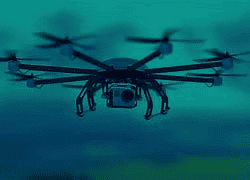
Why in news?
The Indian Army has announced two crucial events, HIM-DRONE-A-THON 2 and HIMTECH-2024, aimed at enhancing military technologies specifically designed for operations in high-altitude regions.
About HIM-DRONE-A-THON 2
- HIM-DRONE-A-THON 2 is set to occur at Wari La, near Leh, on 17-18 September 2024.
- This event provides a platform for the Indian Drone Industry to showcase drone solutions optimized for high-altitude environments, where the Indian Army frequently operates.
- The event will take place under real terrain and environmental conditions at elevations between 4,000 to 5,000 meters, allowing for the assessment of the drones' performance in practical scenarios.
- Indigenous drone manufacturers are invited to participate and exhibit various types of drones, including:
- Surveillance drones
- Loitering munitions
- Logistics drones
- Swarm drones
- Drones equipped for specialized roles and payloads, such as:
- Electronic Warfare
- Synthetic Aperture Radar
- Communication Intelligence
- Electronic Intelligence
HIMTECH-2024: Advancing High-Altitude Technologies
- Following HIM-DRONE-A-THON 2, HIMTECH-2024 will take place.
- This event is designed to discuss, demonstrate, and explore new prospects for the development and integration of technologies tailored for high-altitude military operations.
- Organized in collaboration with FICCI (Federation of Indian Chambers of Commerce & Industry), HIMTECH-2024 will emphasize the latest technologies and systems developed to satisfy operational needs along India's Northern Borders.
GS2/Governance
Gap between allocations for health, outcomes in States
Source: The Hindu

Why in News?
The realization of the complete potential of the Union Budget 2024-25 health allocations is heavily dependent on factors at the state level. This is due to the shared costs and implementation responsibilities of Centrally Sponsored Schemes (CSS).
About the two major Centrally Sponsored initiatives
- Pradhan Mantri Ayushman Bharat Health Infrastructure Mission (PM-ABHIM): This initiative aims to enhance health infrastructure by establishing health and wellness centers (AB-HWCs), block-level public health units (BPHUs), district public health laboratories (IDPHLs), and critical care hospital blocks (CCHBs).
- Human Resources for Health and Medical Education (HRHME): This program focuses on increasing the number of medical personnel by constructing new medical, nursing, and paramedical colleges, augmenting seat availability, and upgrading district hospitals to medical colleges.
Issue of Low Fund Utilization and Faculty Shortage
- Poor Fund Absorption in PM-ABHIM: The fund absorption rate was notably low, with only 29% utilized in 2022-23. This is attributed to complex execution structures, a heavy reliance on health grants from the 15th Finance Commission (only 45% utilized), and delays in construction due to stringent procedures.
- Low Fund Utilization in HRHME: The utilization of funds for educational infrastructure was approximately 25% of the budget estimates in both 2022-23 and 2023-24.
- Shortage of teaching faculty: There is a pronounced shortage of teaching faculty in newly established medical institutions, with over 40% of positions left vacant in 11 of the 18 All India Institutes of Medical Sciences. For instance, Uttar Pradesh reported a 30% vacancy rate for teaching faculty in government medical colleges set up between 2019-21.
- Lack of specialist positions: The absence of specialists hampers the establishment and upgrading of medical colleges and district hospitals, with more than a third of sanctioned specialist positions in urban Community Health Centers (CHCs) and two-thirds in rural CHCs unfilled as of March 2022.
How can states work on Fiscal space? (Way forward)
- Enhanced Budget Planning and Allocation: States should focus on prioritizing and allocating funds effectively for health infrastructure and ongoing costs.
- Strengthening Revenue Generation: States could enhance their own revenue sources by improving tax collection, introducing new revenue streams, or fostering public-private partnerships.
- Optimizing Expenditure Management: By implementing better financial management practices—such as cost control measures, transparent procurement processes, and efficient resource utilization—states can manage and enhance the impact of budget allocations for health infrastructure and services.
GS2/Governance
The Aparajita Bill and Other Similar Laws to Curb Sexual Assaults on Women
Source: The Hindu
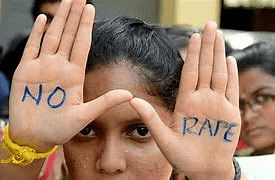
Why in News?
The Aparajita Woman and Child (West Bengal Criminal Laws Amendment) Bill 2024 has been unanimously approved by the state Assembly, mandating the death penalty for rape cases resulting in the victim's death or a permanent vegetative state. This decision comes amidst public outcry following the tragic rape and murder of a young doctor at Kolkata's R G Kar Medical College and Hospital.
The Indian Laws to Curb Sexual Assaults on Women:
- The Criminal Law (Amendment) Act 2013: This act amended the Indian Penal Code (IPC) to introduce the death penalty in cases of rape that result in death or leave the victim in a persistent vegetative state, targeting repeat offenders as well.
- The Criminal Laws (Amendment) Act 2018: This law stipulates the death penalty for the rape and gang rape of minors under the age of 12.
- The Bhartiya Nyaya Sanhita 2023: This act maintains previous penal provisions while adding that gang rape of women aged 18 and above is punishable by death.
Salient Provisions of the Aparajita Bill:
- The Bill amends provisions of the Bharatiya Nyaya Sanhita 2023 (BNS), the Bharatiya Nyaya Suraksha Sanhita 2023 (BNSS), and the Protection of Children Against Sexual Offences Act 2012 (POCSO) specific to West Bengal.
- Provisions of BNS amended:
- In cases with aggravating circumstances (e.g., rape by a public servant), the Bill adds the phrase "or with death" to the maximum punishment description (imprisonment for life).
- It mandates the death penalty in instances where the victim dies or is left in a permanent vegetative state due to rape.
- For gang rape of women above 18, the Bill prescribes the death penalty.
- For repeat offenders, it replaces simple "imprisonment for life" with "rigorous imprisonment for life."
- The Bill increases penalties for disclosing a rape victim's identity and for publishing court-related information related to rape cases.
- It imposes "rigorous imprisonment for life" as the sole punishment for acid attacks, eliminating lighter sentences.
- Provisions of POCSO Act amended: The Bill introduces the death penalty for penetrative sexual assault, where life imprisonment was the highest punishment previously.
- Provisions of BNSS amended:
- It reduces the investigation period for offences under the BNS and POCSO from two months to 21 days, extendable by 15 days if necessary.
- The trial completion time after filing a chargesheet is also reduced from two months to 30 days.
- Task Forces, Special Courts: The Bill establishes special institutions, like Special Police Teams, dedicated to investigating crimes against women, ensuring strict timelines for processing rape cases. For example, a special Aparajita Task Force will be created in every district to handle such investigations.
Other Similar State Laws to Curb Sexual Assaults on Women:
- Prior to West Bengal's legislation, Andhra Pradesh and Maharashtra had passed laws (the Disha Bill and Shakti Bill, respectively) that also mandated the death penalty for rape.
- The Disha Bill (2019): This introduced the death penalty for rape crimes, including those against minors under 16, gang rape, and for repeat offenders.
- The Shakti Bill (2020): This similarly introduced the death penalty for rape and established expedited investigation and trial timelines.
- Both bills have yet to receive the necessary presidential assent.
- Earlier, Madhya Pradesh and Arunachal Pradesh also introduced death penalties for the rape or gang rape of minors under 12 years of age.
Difficulties in Introducing State Laws to Curb Sexual Assaults on Women:
- The Aparajita Bill will be submitted to the Governor of West Bengal, who will forward it to the President for assent, which is crucial for the Bill's enactment.
- Why is the President's assent crucial? In the Mithu vs. State of Punjab case (1983), the Supreme Court ruled that a 'mandatory' death sentence violates fundamental rights, including the right to equality (Art 14) and the right to life (Art 21), as it could result in an "unfair, unjust and unreasonable procedure" depriving individuals of their lives.
GS2/Polity
What is a Review Petition?
Source: Times of India

Why in News?
Recently, some medical students have initiated a review petition challenging the Supreme Court's decision to reject their request for the cancellation of NEET UG 2024, citing alleged malpractices.
Details
- Constitutional Provision
- Article 137 of the Constitution empowers the Supreme Court to review its own judgments or orders.
- Scope of Review
- The review process aims to rectify “patent errors” rather than trivial mistakes.
- This is not an appeal; it focuses on correcting significant errors that could lead to a miscarriage of justice.
- Filing a Review Petition
- Any individual adversely affected by a ruling can file a review petition, even if they were not a direct party to the case.
- It must be submitted within 30 days of the judgment or order.
- Delays may be permitted if accompanied by valid reasons.
- Grounds for Review
- The emergence of new and significant evidence that was not available earlier, despite reasonable diligence.
- Identifiable mistakes or errors that are apparent on the record.
- Procedure in the Court
- Review petitions are typically considered through circulation, without oral arguments.
- In exceptional cases, oral hearings may occur, particularly in death penalty matters.
- These petitions are reviewed by the same bench of judges that issued the original judgment or order.
- Options After Review Fails
- If a review petition is denied, a curative petition can be submitted based on the Roopa Hurra v. Ashok Hurra (2002) ruling, which is limited to very narrow grounds similar to those in a review petition.
GS2/International Relations
Singapore: A partner in India’s growth story
Source: India Today
Why in news?
The upcoming visit of the Prime Minister to Singapore presents an opportunity to assess the current status of India-Singapore relations, which are dynamic and constantly evolving, offering numerous avenues for collaboration.
Historical Ties:
- Diplomatic relations were established shortly after Singapore gained independence in 1965, with India being one of the first nations to recognize it.
- The partnership has developed significantly through high-level exchanges and collaborations, especially since the 1990s.
Look East Policy:
- Singapore plays a crucial role in India's "Look East" policy initiated in the early 1990s, focusing on bolstering economic and strategic ties with Southeast Asia.
Comprehensive Economic Cooperation Agreement (CECA):
- Signed in 2005, CECA has notably strengthened trade and investment, making Singapore India's largest trading partner in ASEAN and a key source of foreign direct investment (FDI).
Defense and Security Cooperation:
- The bilateral relationship entails extensive defense collaboration, including joint military exercises and training, particularly focused on maritime security, reflecting shared strategic interests.
What is Singapore’s contribution to India’s Growth Story?
- Economic Hub:
- Singapore stands as India's largest trade partner within ASEAN, serving as a vital gateway for Indian businesses aiming to expand into Southeast Asia.
- Largest Source of FDI:
- As the leading source of foreign direct investment, Singapore accounts for about 17% of total FDI inflows into India since 2000, with investments surpassing USD 136 billion over the past 22 years.
- Knowledge Exchange:
- Singapore is a hub for Indian talent, particularly from prestigious institutions like IITs and IIMs, fostering knowledge transfer and enhancing India's capabilities across various sectors.
- Cultural Exchange:
- Strong cultural ties, bolstered by the Indian community in Singapore, have enriched bilateral relations, with ethnic Indians making up approximately 9.1% of Singapore's resident population.
How this relationship can achieve more considering the ASEAN region and Chinese dominance? (Way forward)
- Strategic Partnership:
- The partnership can be enhanced by improving strategic dialogues and collaborations in areas like security, technology, and sustainability, especially relevant in the Indo-Pacific context.
- Regional Connectivity:
- Initiatives like the Trilateral Highway, aiming to connect India with Myanmar and Thailand, can improve regional connectivity and trade, positioning both India and Singapore as key players in ASEAN.
- Countering Chinese Influence:
- As China's influence grows in the region, India and Singapore can deepen their collaboration to address mutual concerns, using their partnership to promote stability and security in Southeast Asia.
- Emerging Technologies:
- Focusing on emerging sectors such as semiconductors, green technologies, and electric mobility can create new opportunities for cooperation, aligning with the sustainable development goals of both nations.
GS1/History & Culture
Ancient India Temple Music: Haveli Sangeet
Source: Times of India
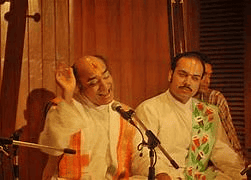
Why in News?
Haveli Sangeet is a distinctive form of classical music deeply rooted in the ancient temple traditions of India.
About
- Origin
- Connected to the Pushti Margiya temples of the Vaishnava Tradition.
- Emerges from ancient temple music practices.
- Historical Background
- Revitalized during the Bhakti movement.
- Experienced a decline during the medieval period due to various socio-political changes.
- Founder
- Mahaprabhu Vallabhacharya, a 16th-century figure, was the founder and key advocate of devotional worship (Bhakti).
- Key Elements
- Incorporates Raga (melody), Bhog (offering), and Shringar (adornment) within the practice of sewa (service) in temples.
- Musical Styles
- Comprises various forms such as Prabandh, Dhrupad, Dhamar, Khyal, Kirtana, and Bhajan.
- Not confined to a single style, showcasing a rich diversity in musical expression.
- Languages Used
- Performances generally utilize languages including Brij Bhasha, Sanskrit, Punjabi, and Marwari.
- Significant Figures
- Key contributors include Vallabhacharya, Shri Vitthalnathji (Shri Gusaiji), and the Astachaps poets like Kumbhandas and Surdas, as well as renowned artist Pandit Jasraj.
- Role in Vaishnavism
- Acts as a medium for Kirtan Bhakti, emphasizing communal singing and profound emotional devotion to Lord Krishna.
GS2/International Relations
PM Modi’s visit to Brunei
Source: Hindustan Times
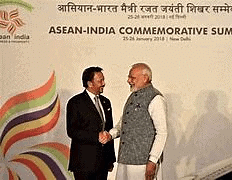
Why in News?
India’s Prime Minister Narendra Modi visited Brunei Darussalam on an official two-day visit. This is the first-ever bilateral visit by an Indian Prime Minister to Brunei. The historic visit coincides with the 40th anniversary of the establishment of diplomatic ties between India and Brunei.
Significance of Brunei for India
- Brunei plays a pivotal role in India's 'Act East' Policy and Indo-Pacific Vision.
- The ASEAN (Association of Southeast Asian Nations) is viewed as the "central pillar" of India's Act East Policy, and Brunei is a member of ASEAN.
Economic Significance
- Many Southeast Asian nations have experienced rapid economic development in recent decades, making commerce essential to their relations.
- India-Brunei trade was approximately $286.20 million last year.
- Brunei ranks as one of the largest oil and gas producers in the region.
- Brunei's strategic location in the South China Sea is significant, as around 55 percent of India's trade passes through these disputed waters.
To Counter China
- Brunei claims part of the South China Sea, an area predominantly claimed by China.
- Unlike other nations asserting claims in the region, Brunei has maintained a low profile regarding its relatively small claim off northern Borneo, focusing instead on strengthening trade relations with China amid efforts to diversify its economy.
- Experts suggest that India could leverage Brunei's potential in its China+1 strategy, which encourages businesses to diversify their manufacturing and supply chains beyond China.
Indian Diaspora
- The initial influx of Indians to Brunei began with the discovery of oil in the 1920s.
- Currently, around 14,000 Indians reside in Brunei, contributing significantly to the healthcare and education sectors.
Sultan Haji Hassanal Bolkiah’s Visits to India
- Sultan Bolkiah, one of the longest-reigning monarchs globally, has made four visits to India, underscoring the importance of strong bilateral ties, with his most recent visit as Chief Guest at India’s Republic Day parade in 2018.
About the Visit
- PM Modi arrived in Bandar Seri Begawan, the capital of Brunei Darussalam, on September 3 for his official visit.
- This marks the first visit by an Indian Prime Minister to the Southeast Asian nation and celebrates 40 years of diplomatic relations.
- He inaugurated a new Chancery of the High Commission of India and visited the Omar Ali Saifuddien Mosque, which showcases a blend of Mughal and Italian Renaissance architecture.
- The new Chancery is expected to greatly enhance diplomatic relations, featuring Indian motifs that reflect cultural identity in Brunei.
Defense Cooperation
- A Joint Working Group will be formed to strengthen defense ties between India and Brunei.
Space Cooperation Pact
- PM Modi and Sultan Haji Hassanal Bolkiah discussed a potential space cooperation agreement, indicating shared interests in advancing technological collaboration in space exploration and satellite technology.
- PM Modi expressed gratitude for Brunei's support in hosting ISRO's Telemetry Tracking and Telecommand (TTC) Station.
Cooperation in Energy Sector
- The countries explored long-term cooperation in LNG supplies, particularly significant as India has shifted its oil demand from Brunei to Russian imports recently.
Strengthening Bilateral Ties: Enhanced Partnership
- India and Brunei elevated their relationship to an "enhanced partnership," agreeing to collaborate in key areas such as defense, trade, investment, space, health, education, and cultural exchanges.
- They acknowledged the necessity of ongoing dialogue through platforms like the Joint Trade Committee (JTC).
GS3/Environment
Bandipur Tiger Reserve (BTR)
Source: Times of India
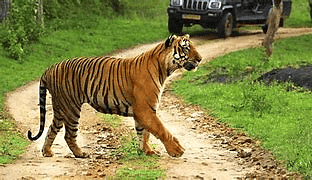
Why in news?
An elephant was rescued from a rail barricade in the Maddur range of Bandipur Tiger Reserve.
About the Bandipur Tiger Reserve (BTR):
- Location: Situated in the Mysore and Chamarajanagar districts of Karnataka, it lies at the junction of Karnataka, Tamil Nadu, and Kerala.
- Part of: The reserve is part of the Nilgiri Biosphere Reserve and is recognized as a UNESCO World Heritage Site.
- Geography: The area is an ecological confluence of the Western and Eastern Ghats, alongside Mudumalai and Wayanad.
- History: Initially established as Venugopala Wildlife Park in 1931, it was expanded into Bandipur Tiger Reserve under Project Tiger in 1973.
- Surrounding Reserves:
- Bordered to the northwest by Nagarahole Tiger Reserve.
- Bordered to the south by Mudumalai Tiger Reserve.
- Bordered to the southwest by Wayanad Wildlife Sanctuary.
- Rivers: The reserve is flanked by the River Kabini to the north and the River Moyar to the south.
- Climate: It experiences a tropical climate characterized by distinct wet and dry seasons.
- Flora: The vegetation ranges from dry deciduous to tropical mixed deciduous forests, featuring species such as rosewood, sandalwood, Indian laurel, and various bamboo types.
- Fauna: The reserve is renowned for harboring the largest population of wild Asian elephants in South Asia, along with other notable species such as the Bengal tiger, gaur, sloth bear, and dhole.
- Previous Year Question (PYQ):[2017] From the ecological perspective, which one of the following is significant in connecting the Eastern Ghats and the Western Ghats?
- (a) Sathyamangalam Tiger Reserve
- (b) Nallamala Forest
- (c) Nagarhole National Park
- (d) Seshachalam Biosphere Reserve
GS3/Science and Technology
Project Strawberry by OpenAI
Source: Indian Express
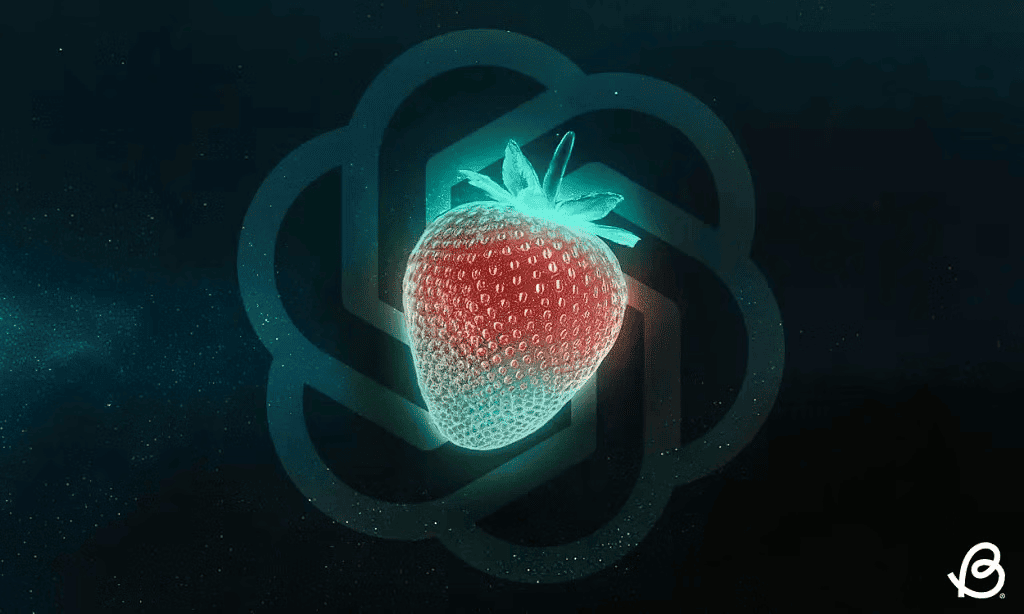
Why in News?
OpenAI has announced plans to unveil its most advanced AI model, which will likely be part of ChatGPT-5, previously referred to as Project Q* (Q-star) but now known as Project Strawberry.
What is Project Strawberry?
- Project Strawberry is a continuation of OpenAI's secretive Project Q*, which focuses on innovative AI training methods.
- This new initiative is expected to introduce advanced reasoning technology.
- Strawberry aims to enhance AI capabilities by enabling models to plan, autonomously search the internet, and perform in-depth research.
What are Large Language Models (LLMs)?
- LLMs are sophisticated AI systems designed to comprehend, generate, and process human language.
- They utilize deep learning techniques and neural networks, trained on extensive text datasets.
Difference from Existing AI Models
- Current LLMs can summarize text and create written content but often fail at tasks requiring common sense and multi-step reasoning.
- These models struggle with planning without external assistance.
- Strawberry models are anticipated to improve AI reasoning, enabling better planning and complex problem-solving abilities.
- This enhancement could allow AI to complete tasks needing sequential actions over time, potentially transforming AI functionalities.
Potential Applications of Strawberry Models
- Advanced AI could perform scientific experiments, analyze data, and propose new hypotheses, fostering scientific advancements.
- In healthcare, AI might aid in drug discovery, genetic research, and personalized medicine evaluations.
- AI could tackle intricate mathematical problems, help with engineering calculations, and engage in theoretical research.
- AI's creative applications could extend to writing, generating art and music, creating videos, and designing video games.
GS3/Environment
Green Hydrogen in India
Source: Business Line

Why in News?
The Ministry of New and Renewable Energy (MNRE) has exempted export-oriented green hydrogen projects from its solar module shortlist of domestic manufacturers. This aimed at enabling green hydrogen projects to lower costs to the level of grey hydrogen.
- About Hydrogen (Properties, abundance)
- Types of Hydrogen (Grey, Blue, Green)
- About Green hydrogen (Benefits, India’s goals, Challenges, etc.)
- News Summary (SIGHT Program)
About Hydrogen:
- Hydrogen is the lightest chemical element.
- It is colorless, odorless, tasteless, non-toxic, and highly combustible.
- Hydrogen ranks as the third most abundant element in the human body, following oxygen and carbon.
- It is the most abundant chemical substance in the universe, making up about 75% of all normal matter.
- Hydrogen can be sourced from various materials, including fossil fuels, nuclear energy, biomass, and renewable resources.
Types of Hydrogen:
- Depending on the production methods, hydrogen is categorized as Grey, Blue, or Green.
- Grey Hydrogen:
- Produced from natural gas or methane via Steam Methane Reformation (SMR) without capturing the resulting greenhouse gases.
- SMR involves using high-temperature steam (700°C to 1,000°C) to extract hydrogen from methane sources like natural gas.
- This process releases CO2 directly into the atmosphere, constituting about 95% of the world's hydrogen production.
- Blue Hydrogen:
- Characterized by capturing and storing carbon emitted during the steam reforming process underground through industrial carbon capture and storage (CCS).
- It is often described as carbon neutral, though some contend that "low carbon" is a more precise term as a portion of carbon (10-20%) cannot be captured.
- Blue hydrogen offers notable cost and emission advantages.
- Green Hydrogen:
- Produced using clean energy from surplus renewable sources like solar or wind power through electrolysis, which splits water into hydrogen and oxygen.
- This method makes green hydrogen the cleanest, as it generates no CO2 by-products.
- Currently, it constitutes approximately 0.1% of total hydrogen production, but this is projected to increase as renewable energy costs decline.
India’s Green Hydrogen Production Goals w.r.t. Other Countries:
- In August 2021, Prime Minister Narendra Modi introduced the National Hydrogen Mission to enhance environmental security and position India as a global leader in green hydrogen production and export.
- India aims to produce 5 million tonnes of green hydrogen annually by 2030, which is half of the European Union’s target of 10 million tonnes for the same year.
- China has set a target to produce 200,000 tonnes of green hydrogen per year by 2025.
- Spain, Germany, and France have committed to installing 4 GW, 5 GW, and 6.5 GW of green hydrogen capacity respectively by 2030.
Present Capacity:
- India currently has 26 hydrogen projects with a total capacity of 255,000 tonnes per year.
- Most of these projects are still in initial phases, with only around 8,000 tonnes per year expected to be operational by 2024.
Challenges Associated with Green Hydrogen:
- Technology:
- Electrolysis requires significant innovation, as it involves using electricity to split water into hydrogen and oxygen.
- Electrolysers must be manufactured at an unprecedented scale to meet demand.
- Transportation & Storage:
- It requires either very high pressures or extremely low temperatures, each presenting its own technical challenges.
- Electricity:
- Creating green hydrogen demands vast amounts of electricity, necessitating a substantial increase in wind and solar energy production to fulfill global targets.
Exemptions to Export-Oriented Green Hydrogen Projects:
- The MNRE has provided exemptions to export-oriented green hydrogen projects from its Approved List of Models and Manufacturers (ALMM), which typically requires the use of domestically produced solar modules.
- This exemption permits projects to utilize cheaper imported modules, significantly lowering production costs and enhancing competitiveness against grey hydrogen.
- India aims to produce 5 million metric tons of green hydrogen by 2030, with announced projects totaling 7.5 MMT.
- Additionally, Rs 17,490 crore has been allocated under the SIGHT program for electrolyser manufacturing and green hydrogen capacity, along with Rs 400 crore for R&D initiatives.
- Other incentives include waiving transmission charges and easing environmental clearance processes for green hydrogen projects.
About SIGHT Program:
- The SIGHT (Strategic Interventions for Green Hydrogen Transition) program is an initiative by the Government of India designed to foster the production and adoption of green hydrogen in the nation.
- Key Features Include:
- Focus on Electrolyser Manufacturing: Aims to enhance domestic electrolyser production essential for generating green hydrogen from renewable sources.
- Encourages the establishment of green hydrogen production facilities, positioning India as a global leader in green hydrogen exports.
- Financial Allocation: The Indian government has earmarked Rs 17,490 crore for the SIGHT program to incentivize investment in electrolyser manufacturing and green hydrogen projects.
- Boosting Employment and Investment: The program is expected to generate jobs and attract investments in clean energy technology.
- Incentives and Policy Support: Includes waiving transmission charges for green hydrogen projects and providing funding for research and development.
GS3/Science and Technology
Genome mapping of Chandipura virus
Source: Indian Express

Why in news?
The Gujarat Biotechnology Research Centre (GBRC) in Gandhinagar has successfully published the first fully mapped genome of the Chandipura Vesiculovirus (CHPV). This virus is responsible for causing encephalitis, or brain swelling, which accounted for a significant portion of cases during the outbreak in Gujarat in July-August.
Key Findings of the study
- About
- Genome mapping is the process of determining the locations of genes and important sequences within a genome.
- This process provides essential insights into the virus's origins, its evolutionary changes, and any mutations that could increase its transmissibility or lethality.
- There are two primary types of genome maps:
- Genetic maps: These illustrate the relative positions of genes based on how often they recombine.
- Physical maps: These demonstrate the absolute positions of genes measured in DNA base pairs.
Significance
- Understanding Genetic Disorders: Genome mapping aids in identifying genes linked to genetic diseases, enabling early diagnosis and tailored treatments.
- Personalized Medicine: Mapping facilitates the creation of customized treatment plans based on a person's genetic profile, enhancing the effectiveness of therapies.
- Agriculture: In crop and livestock production, genome mapping assists in identifying beneficial traits, boosting breeding efforts for yield, disease resistance, and quality improvement.
- Vaccine and Drug Development: By understanding the genetic makeup of pathogens like viruses, effective vaccines and medications can be developed, as demonstrated in the fight against diseases such as COVID-19 and CHPV.
- Evolutionary Studies: Genome mapping sheds light on the evolutionary connections among species by comparing genetic sequences across different organisms.
Challenges
- Complexity of Genomes: Larger genomes, particularly in plants and animals, present significant mapping challenges due to their complexity and repetitive sequences.
- Ethical Concerns: The mapping process can provoke privacy and ethical dilemmas, especially regarding the use and access to genetic information.
- Cost and Resources: Although costs have decreased, genome mapping still requires considerable financial investment and technological resources for large-scale initiatives.
- Data Interpretation: Post-mapping, understanding the implications of various genes and sequences can be difficult due to knowledge gaps concerning their functions.
- Chandipura is an infectious disease that can cause outbreaks of Acute Encephalitis Syndrome (AES) or brain swelling.
- Symptoms include fever, headache, and encephalitis, which may lead to convulsions, coma, and potentially death, typically within days of symptom onset.
Family and Vectors
- CHPV is part of the Rhabdoviridae family, which comprises viruses such as the lyssavirus (rabies).
- Vectors include various sandfly species, such as Phlebotomine sandflies, specifically Phlebotomus papatasi, along with Aedes aegypti mosquitoes (known for transmitting dengue).
- The virus resides in the salivary glands of these insects and is transmitted to humans or other vertebrates through bites.
Transmission and Progression of Infection
- Upon transmission, CHPV can spread to the central nervous system, resulting in encephalitis (inflammation of the brain).
- Initial symptoms are flu-like, including fever, body aches, and headaches, which can escalate to confusion, seizures, and encephalitis.
- Additional symptoms may encompass respiratory difficulties, bleeding tendencies, or anemia.
- The infection can progress rapidly, with a high risk of death within 24-48 hours of hospitalization.
Most Affected Population
- The virus primarily impacts children under the age of 15.
- Infections are often seasonal, with outbreaks typically occurring during periods of increased sandfly populations, especially during the monsoon season.
Historical Outbreaks and Endemic Regions
- CHPV was first identified in 1965 during investigations into dengue and chikungunya in Maharashtra.
- Notable outbreaks occurred between 2003 and 2004 across Maharashtra, northern Gujarat, and Andhra Pradesh, leading to over 300 child fatalities.
- The case fatality rate (CFR) during the 2004 Gujarat outbreak reached 78%, while Andhra Pradesh experienced a CFR of 55% in 2003.
- The infection remains endemic in central India, where the vector population is notably concentrated.
- Outbreaks are predominantly reported in rural, tribal, and peripheral regions.
Key Findings from GBRC's Genome Mapping of CHPV
No Major Change in Genetic Makeup
- The CHPV from the recent Gujarat outbreak closely resembles the 2012 strain, exhibiting only a single amino acid mutation in the glycoprotein-B gene.
- This gene plays a critical role in the virus's ability to attach to human cell receptors and elicit an immune response.
- In contrast to COVID-19, the virus has shown minimal need for genetic alteration, likely due to low widespread antibody development and the lack of a vaccine.
Low Viral Load but Severe Impact
- Despite showing a high Cycle Threshold (Ct) value in RT-PCR tests, which indicates a low viral load, the virus still resulted in severe clinical symptoms.
Indigenous Virus, Not Imported
- Genome sequencing demonstrated that the current strain of the virus is closely related to those from previous outbreaks in India during 2003-04 and 2007.
- The virus was not imported from outside the country and is distinct from strains found in Europe and Africa, confirming its circulation within India.
|
38 videos|5293 docs|1118 tests
|
















